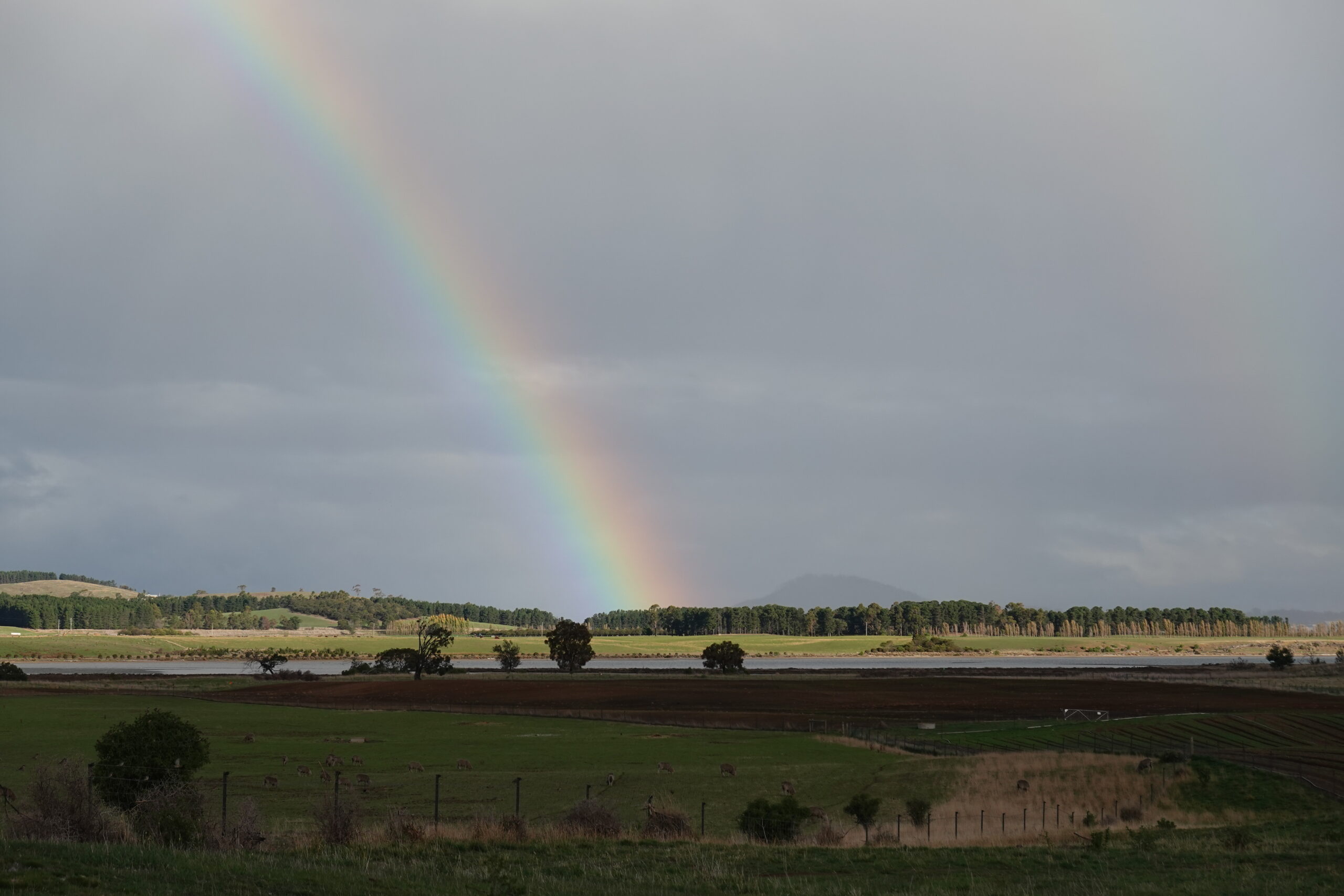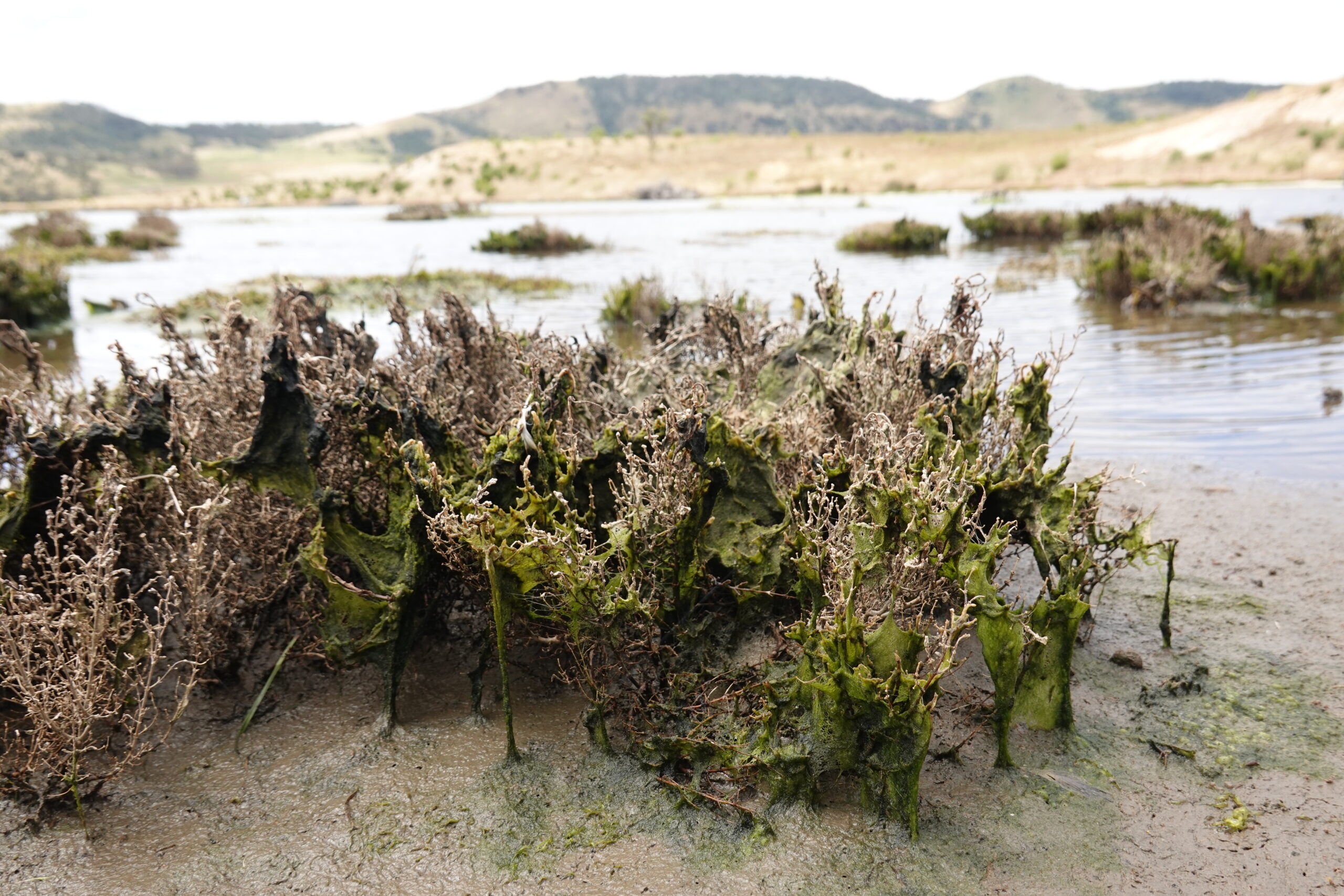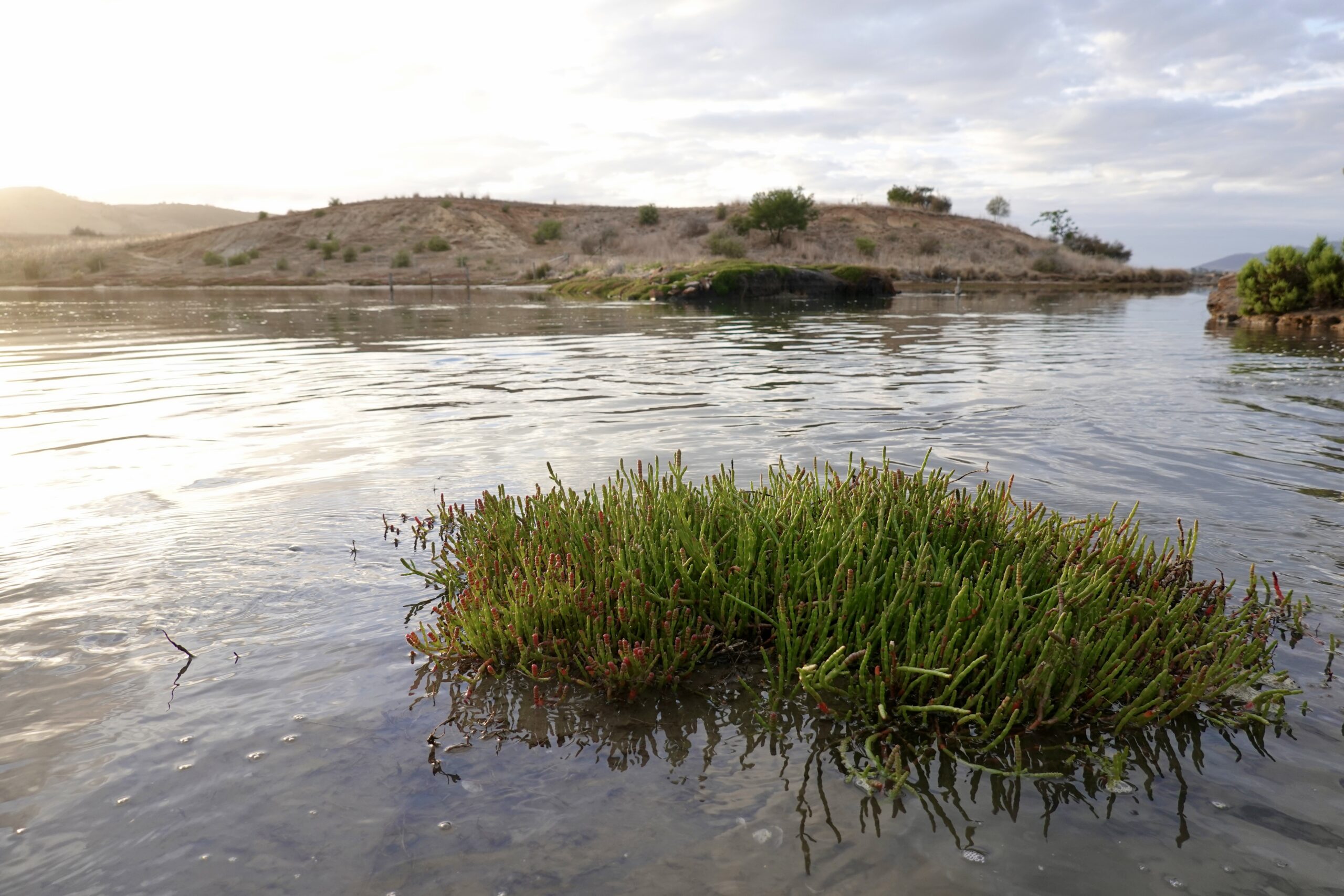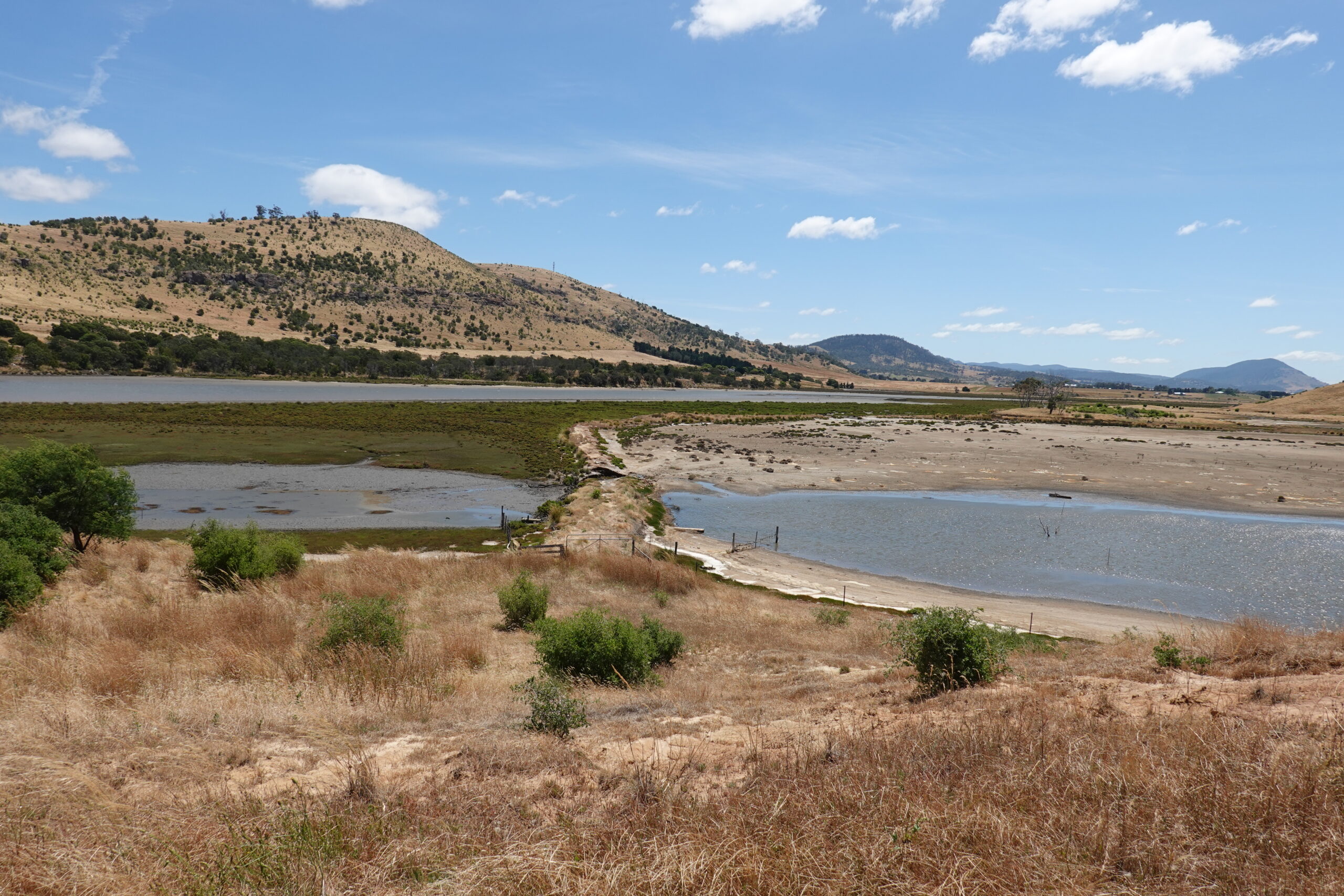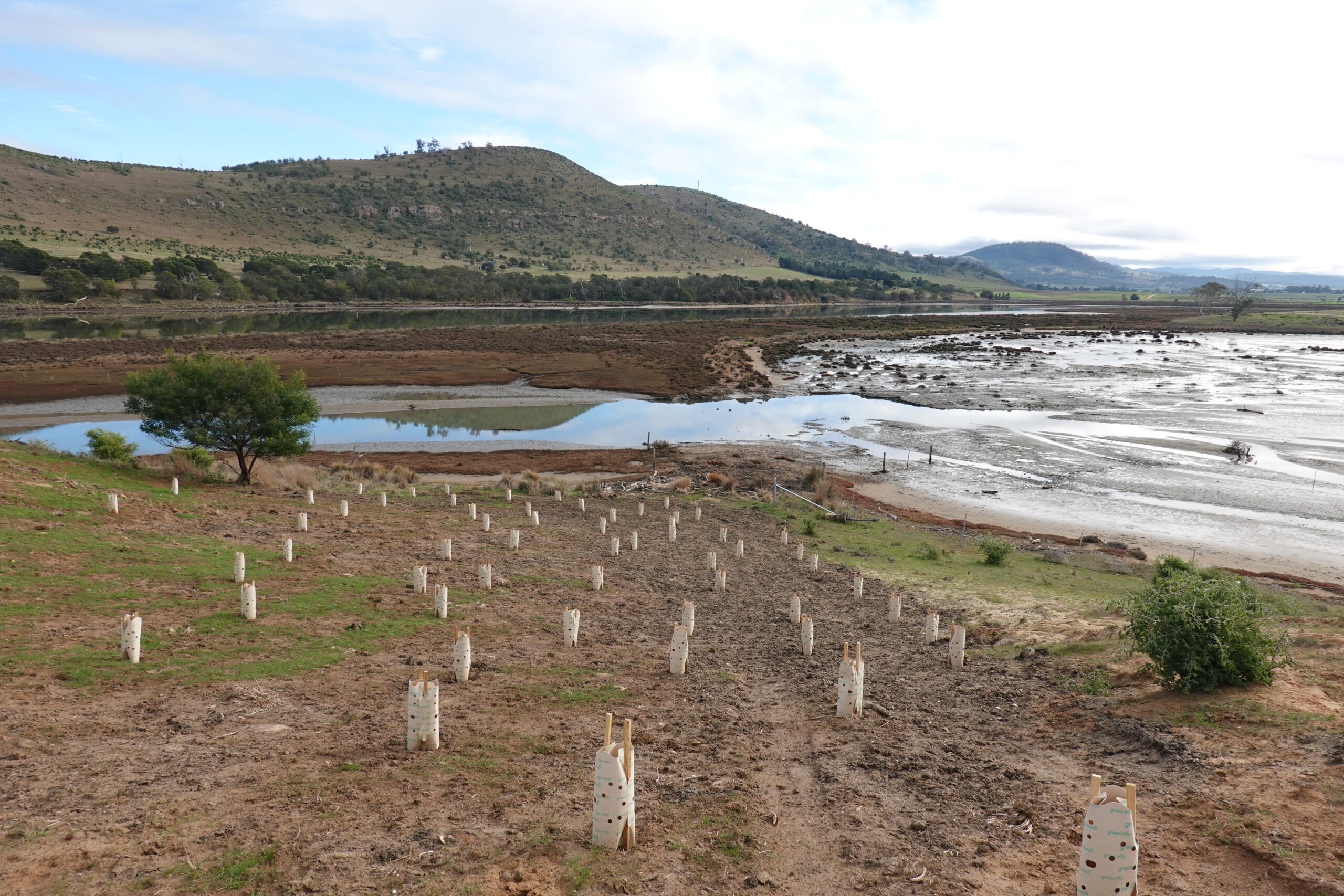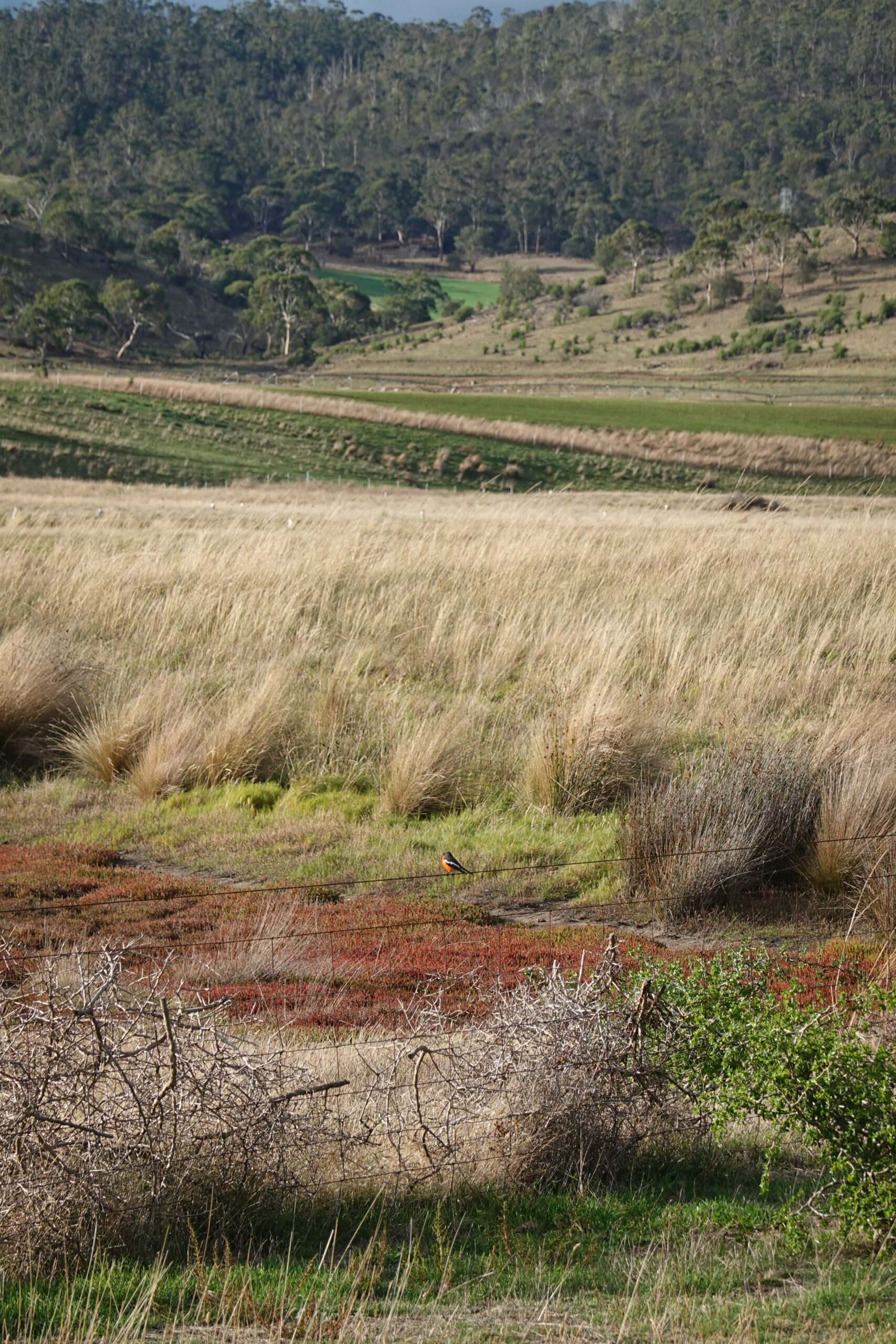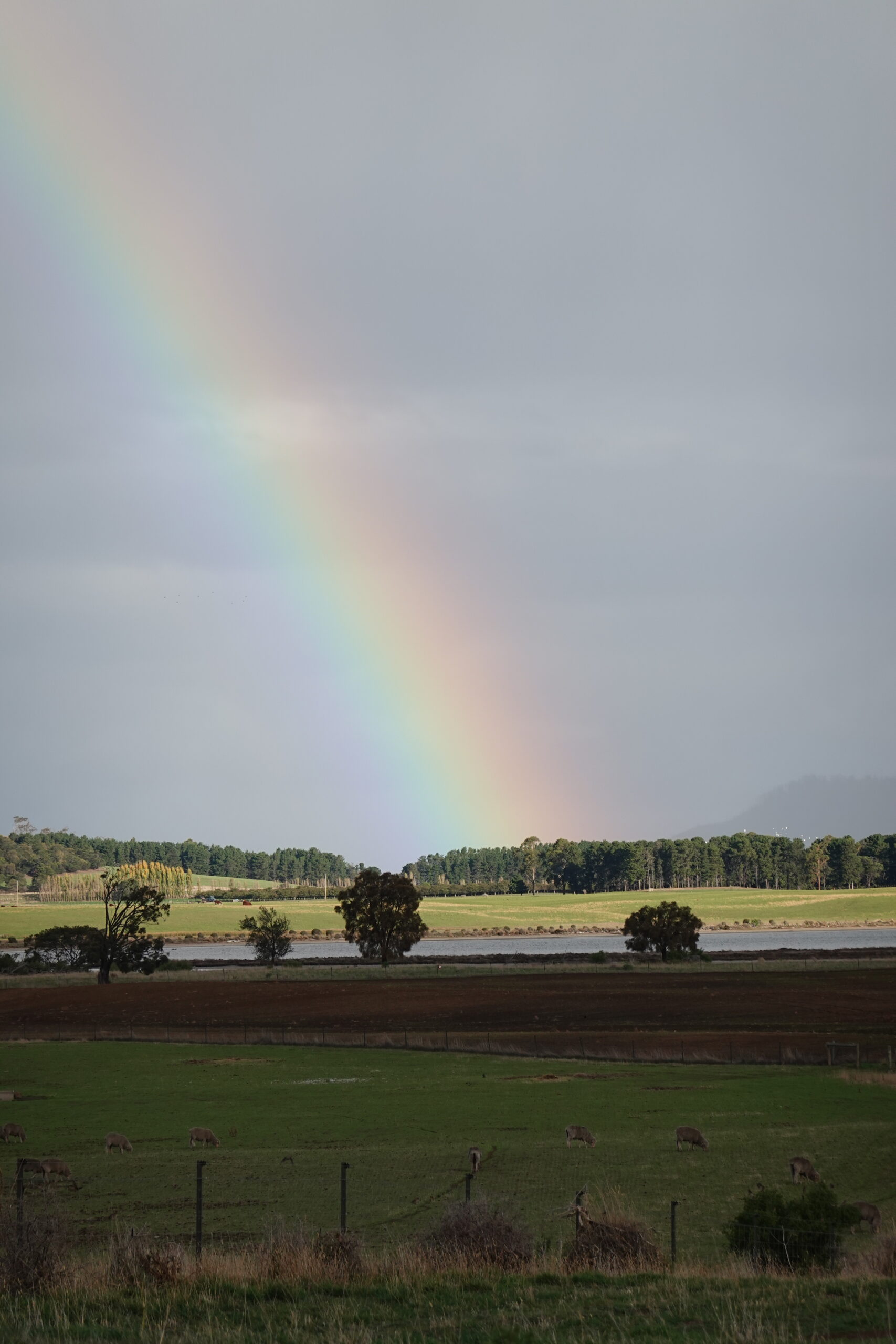After years of planning and effort, NRM South is celebrating the successful removal of a barrage that has been impeding the flow of water across saltmarsh wetland at Richmond Park, part of the Ramsar-listed Pitt Water-Orielton Lagoon located just south of Richmond in southern Tasmania. The structure, known as a bund or levee, was constructed around the 1960s as a way of drying off sections of the wetland to make it suitable for sheep grazing. Cut off from the Coal River, the saltmarsh has slowing been dying off, with the lack of flowing water leading to ponding and an excessive build-up of nutrients.
Since 2020, NRM South has been working with the owners of Richmond Park Estate on a series of restoration activities that are breathing new life into a 65-hectare section of the wetland. Activities including weed control, revegetation, fencing and monitoring were part of Australian Government funded projects that ran to 2023. The removal of the levee, which had already begun to degrade, forms part of a current Blue Carbon project. The degradation of the structure meant that it had to be rebuilt to allow machinery to begin the full removal process from the appropriate side of the bank (summarised in the video below).
The return of natural tidal flows will allow stranded saltmarsh to recover, providing important habitat for the plants and animals that rely on saltmarsh. These restoration efforts are also supported by fencing to keep stock off the recovering site.
Now that the levee has been removed, we expect to see more of the saltmarsh recovery and new growth that had already been observed as a result of a partial erosion of the levee in 2023 (see below).
In 2023, a section of the levee eroded allowing more water across the site. Recovery to the saltmarsh has already been observed as a result.
In April 2024, the levee was completely removed allowing for the complete return of natural water flow across the site.
One of the main aims of the Blue Carbon project is to learn more about the range of benefits that result from restoring stranded saltmarsh, including the flow-on impacts to surrounding habitat such as seagrass or terrestrial ecosystems. NRM South is working with the University of Tasmania and Blue Carbon Services to carry out ongoing monitoring that we hope will help answer these questions.
This project is delivered by NRM South through funding from the Australian Government’s Blue Carbon Ecosystem Restoration Grant.
